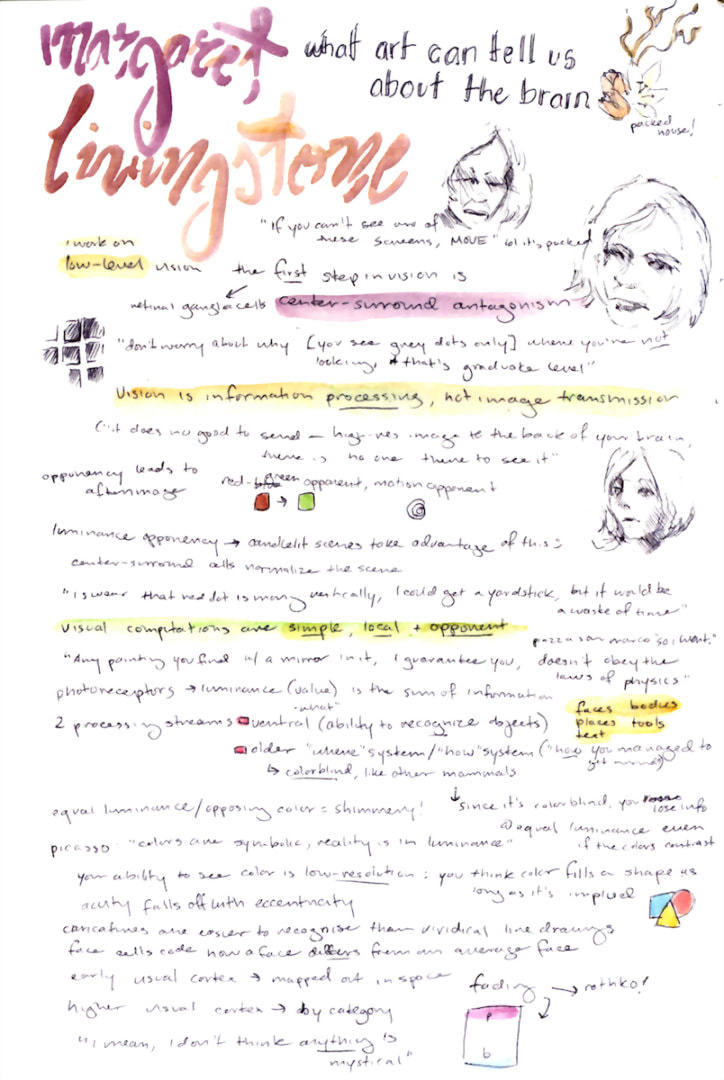
Margaret Livingstone spoke at NYU on the subject of “What Art Can Tell Us About the Brain” on Tuesday, and I filled this page before she even got to the Q&A. I’d been curious to see her speak because of my interest in perception and how she relates it to art, and the talk was very spirited. She explained different aspects of perception with a series of optical illusions, including her insights on the Mona Lisa’s smile which I’d seen and found fascinating.
A couple of the biggest takeaways from this were:
- our visual processing “normalizes” the visual information we get, and artists know + play with this, which explains why a painting of a scene will regularly be different from a photograph of a similar scene.
- many visual processing quirks stem from the fact that there are two processing streams when parsing an image, and one is colorblind (the older system). This explains the “shimmery” effect we get from colors that have color contrast but no luminance contrast, for example.
- From the overflow to these notes: on the impact of diorama-type work, she said “Maybe by making something the wrong size, artists get you to process it with a different part of your brain”, referencing things like how we don’t really process an image of a face if it’s upside down. This is food for thought for me as I continue to work with, and be interested, in representations of space at small scales.